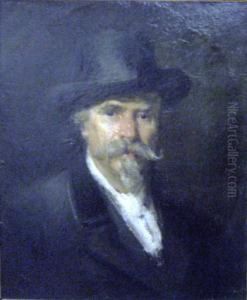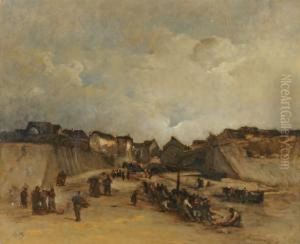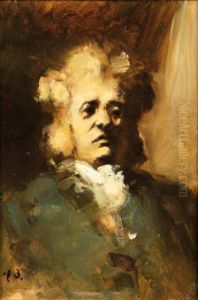Auguste Ii Boulard Paintings
Auguste II Boulard, born in 1827 and deceased in 1897, was a French painter known for his landscape and genre paintings. His artistic journey began in the mid-19th century, a period that witnessed the flourishing of various art movements in Europe, including Romanticism and Realism. Boulard was adept at capturing the serene beauty of rural France, often portraying the countryside with a remarkable sense of realism and attention to detail.
Auguste II was part of a family lineage of artists, which contributed to his early exposure to the art world. This familial environment nurtured his talents from a young age, allowing him to develop a keen eye for composition and color. Despite the influence of his artistic heritage, Boulard carved out his own niche, distinguishing himself through his unique approach to landscape painting.
Throughout his career, Boulard exhibited his works in numerous salons and galleries, gaining recognition among art critics and collectors. His paintings often depicted the everyday life of French villagers, imbued with a sense of tranquility and timelessness. Boulard's ability to evoke emotion through his depictions of simple, yet poignant scenes, endeared him to a broad audience.
In addition to landscapes, Boulard also explored genre painting, capturing scenes of social gatherings and moments of leisure in the French countryside. These works are noted for their vibrant color palette and dynamic compositions, reflecting the joy and vibrancy of rural life.
Despite his success, Auguste II Boulard remains a somewhat enigmatic figure in the history of French art. His contributions, while significant, have been overshadowed by those of his contemporaries and successors. Nevertheless, his paintings continue to be appreciated by art enthusiasts and collectors for their beauty, technical skill, and emotional depth.
Boulard's legacy is preserved in various art collections and museums across France and beyond, where his works continue to inspire admiration and study. His depiction of the French landscape offers a glimpse into the 19th century's rural life, serving as a testament to the enduring appeal of his artistic vision.















